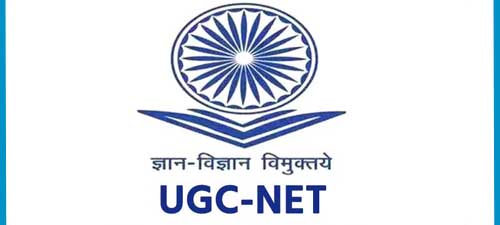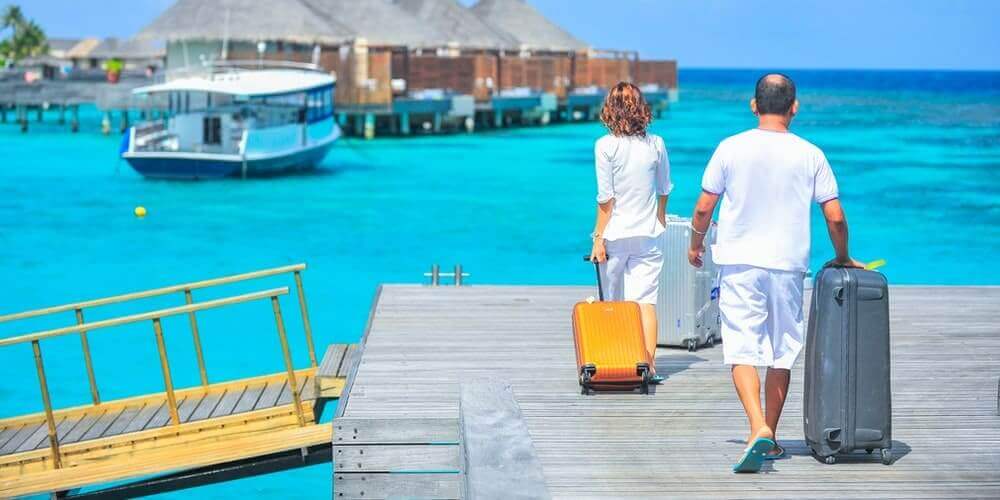Cost-Benefit Analysis and its Types: Cost-Benefit Analysis (CBA) is a technique that signifies to describe and quantify the social advantages and disadvantages of policy in terms of common monetary unit. Though a critical task, the aim of CBA is to analyze the cost i.e. the disadvantages and the benefits i.e. the advantages of any proposal. It becomes easy to perform such analyses when the costs and benefits are quantified in monetary terms, but when the analysis is performed on a societal outlook; it becomes difficult to examine the scenario.

The cost benefit technique balances costs against benefits of a design to show the net benefit of the plan. Cost-Benefit Analysis is a systematic approach that can be used to compare costs and benefits of a policy, project or decision generally from the viewpoint of the society as a whole. CBA generally involves comparing the total expected cost of each project with the benefits involved and measuring whether the cost is more or the benefit of the project.
Cost benefit analyses can be further alienated into three forms:
- Economic-Cost Benefit Analysis
- Social Cost-Benefit Analysis
- Environmental Cost-Benefit Analysis
1. Economic Cost-Benefit Analysis
The economic cost-benefit analysis relates to the measuring of the monetary benefits and costs gained by the tourism development assignments in a destination. This technique gives a blueprint of the financial profits and losses of the tourism projects and the ventures which are implemented by the government.
Before finalizing the implementation of any tourism related project in an area it becomes mandatory to run this financial profit loss assessment which would provide a check on the investments done for a particular project and the profits being incurred in lieu of it. The project should only be approved to be fit for the estimation and its communities when the analysis results in increased profits and benefits of the project than the costs involved in setting up of it.
This would initialize the economic growth of the destination through tourism development projects, helping the local authorities to increase their benefits from the tourism projects and transfer the monetary benefits to the bottom of the pyramid to communities.
The economic benefits are the only benefits which can be measured and estimated accurately in monetary terms. While starting a venture it should always be estimated whether the costs are more or the benefits and the project should only be approved if the benefits overshadow the costs of the project. This would bring about more profits for the government and authority of the destination.
Economic Costs
- Development of Tourism infrastructure such airports, roads, recreational facilities etc. have their own cost. Otherwise it can be used to build other communities related infrastructure like hospital, school and other facilities and services.
- Tourism may inflate property values and swell prices of goods and services. Tourists have higher purchasing capacity and can offer higher price for land and other goods because of their higher propensity for owning the specific goods and services.
- Most of the economic benefits that are to be derived from tourism development will leave the community behind if outside interests get priority to own the tourism development.
- There is a sizeable amount of foreign exchange revenues which go back out of the host countries to cater to the tourists in tourism related imports. Tourists demand those products and services which are unavailable with local communities so they buy from outside destination country. Instead host should try to convince tourists with local made products as alternatives to satisfy tourist demand for specific product.
- Tourism employment more or less tends to be seasonal. Workers employed in tourism industry may be laid off in lean season as income generated from tourism in these seasons is very much less to get a large number of employment.
- In the tourism industry many jobs are poorly paid. This is a particular problem in destination country where the local work force lack the ability and skills to fill the higher paid management positions in tourism and its related organization.
- The numbers of tourist inflow can be adversely exaggerated by events and activities beyond the control of the destination. For example, terrorism, economic recession and others. This is a huge problem in countries that are largely dependent on tourism.
- Tourism also follows a “product life cycle”. Destination with a final stage of decline, no longer offers new and diverse attractions for the tourist. The quality of services may also get diminished with the increase of outside competition and tourist saturation.

Economic Benefits
- Tourism helps in diversifying and stabilizing the local economy. It helps local economy to grow and foster by way of enlarging the market by attracting the tourist from different places and countries.
- It provides with extra tax revenues through airport taxes, accommodation and restaurant taxes, sales and services taxes, park entrance and other fees, employee income tax and other related taxes each year to local and national government.
- Tourism creates local business opportunities and skilled and semi-skilled jobs. These include all those jobs directly related to tourism that of travel agents, tour services and hotels and those that indirectly support tourism like food production and services and housing construction.
- Tourist money is returned back to the local economy over and over again as it is spent. It has reciprocal impact on local economy. Tourism pumps in new money into the economy.
- Tourism helps to attract extra businesses and services to accelerate and support the tourist industry.
- Tourism is labor-intensive service industry. In every step of tourism, human services are required for smooth functioning, starting from booking of ticket through travel agent to tour guide in touring places, to room service in accommodation and catering services in restaurant to other allied services required to tourist from time to time.
- Tourism earns valuable foreign exchange to destination country. It is only industry where foreign exchange is earned without transferring of goods outside the country. Tourists sell out their hard earned money for getting experience and ambience of destination.
2. Social Cost-Benefit Analysis
A social cost benefit analysis technique is a method of measuring the impacts caused by the tourism venture or a policy implementation. It comprises the project like investment costs, taxes and profits along with the social impacts of the project like pollution, environmental safety, spatial quality and health repercussions.
The social cost benefit analysis in tourism is important because of the societal norms which are often subjected to neglect by the policy makers in the shadow of economic benefit. Keeping in mind the unique culture of any place tourism can flourish in a much more productive way by using the social cost benefit technique which would help the decision makers and policy makers of the destination to protect the culture and traditional beliefs of the destination.
For example, for island destination or more vulnerable destination than the mainland destinations, it is very essential to perform a social cost benefit analysis in order to safeguard the norms and sacred values of tribal communities and other residential communities so as to extract the maximum benefit from the tourism activities economically as well as socially. The tourism activities in such areas should contribute to growth of the communities and not destruction of the age old traditions.
Social Costs
- The Destination may attract visitors or tourist whose lifestyles and ideas may conflict with the host community’s. For example the tourist may use drugs and alcohol in banned area like religious place and create scene that hurt the religious sentiments and dilute the piousness of the place.
- It may change individual tourist behavior and family relationships.
- It may lead to intensify the growth in sexually transmitted diseases through interaction between host and guest communities.
- It may cause loss of traditional values and culture in host communities through imitation or adoption of tourist behavior or by cultural diffusion resultant from everyday interaction with them.
- It may lead to create congestion and crowding in everyday transportation, traffic or in public services communities are using.
- Host and guest may compete within themselves for available public facilities, services, and existing recreation and shopping opportunities.
- Sometimes it results in harassment of tourist as they were perceived to be wealthy and it will lead to an increase in crime rate in the area.
- Sometime the resident of place have been displaced from their land and belonging. For example, some beaches have been cleared and reserved for hotel guests only while local people is barred to access beaches, from which they are earning their livelihood This type of activities are clear violations of human rights.
Social Benefits
- Tourism brings in money from outside to building and upkeep of community facilities and services which otherwise might not be established.
- It encourages civic involvement and pride from their culture and traditions, built and natural resources.
- It provides a platform for cultural exchange among hosts and guests communities.
- •It encourages the preservation of local festivals and cultural events through celebration that otherwise get lost in time.
- Tourism can also benefit residents by developing facilities and infrastructure for them.
- It encourages both host and guest to learning of new languages and skills. It helps in giving new life line to endangered languages.
- Tourism related funds were used to build schools and other social infrastructure in some areas.
3. Environmental Cost-Benefit Analysis
The environmental cost-benefit in this era of global warming and ozone depletion can end up being the most beneficial technique. Every project in tourism goes under the assessment of environment impact.
The environmental cost-benefit technique is the one which helps the concerned authority to keep a check on the environmental impacts of the project by listing down the benefits happening to the environment by the venture and the costs the environment has to pay for the same.

The project should only be passed if the listed benefits are larger than the cost incurred by the environment in running the project. This pays a genuine help to the environment of the destination in conserving and protecting the flora and fauna species.
For instance, the accommodation facilities constructed in the premises of the protected areas such as the national parks of reserves needs to be checked at a regular basis in order to maintain the sanctity of the environment and its beings. The environment CBA plays major role in helping the creatures around the area whether the plants, animals or the primitive human beings by preserving the endangered species and respecting the culture and values of the destination communities.
Environmental Costs
- Tourism may threaten explicit natural resources and assets such as mountains, beaches, coral reefs, historical sites and other specific sites.
- It may increase litter and pollution as number of tourist increases.
- Tourism brings competition for limited natural resources such as land and water. It may result in loss of wildlife flora and fauna, deterioration of scenic beauty and land degradation.
- It directly contributes to solid waste pollution and sewage problem in tourist hosting region.
- Pollutant emissions generated by different forms of transport have significant environmental problems that directly related to tourism.
Environmental Benefits
- Tourism promotes conservation and preservation of natural and cultural. It also helps in maintenance and restoration of historical resources.
- It encourages community revitalization.


